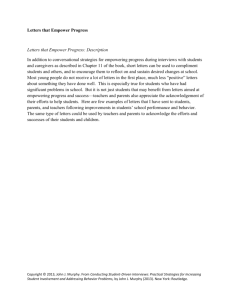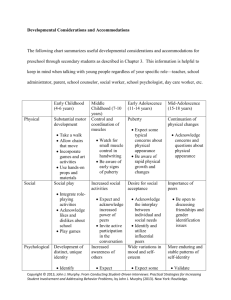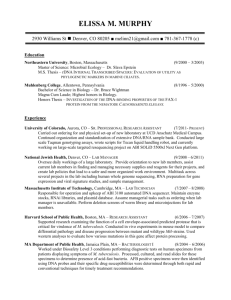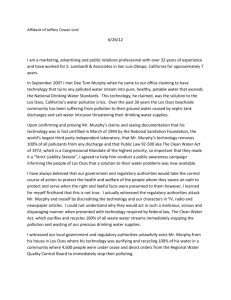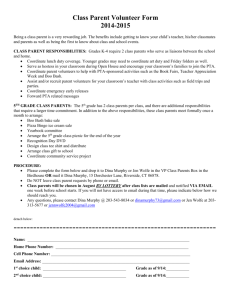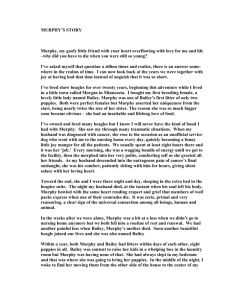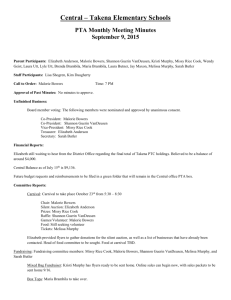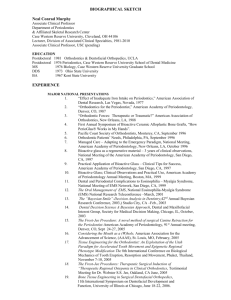Self-Directed Worksheets
advertisement
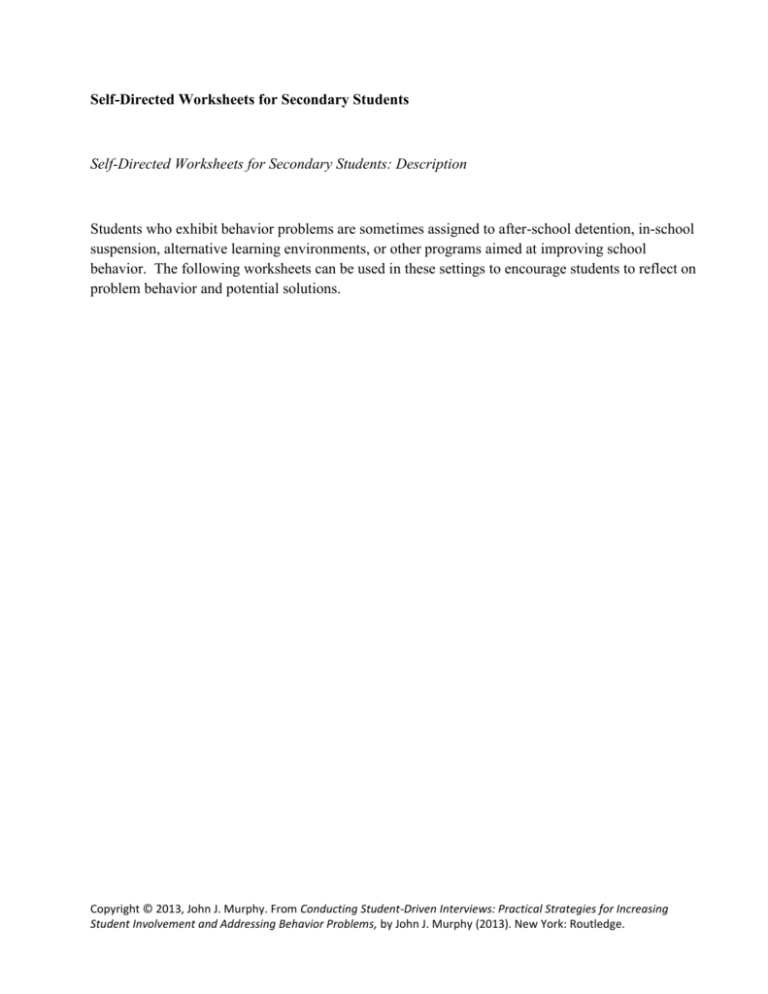
Self-Directed Worksheets for Secondary Students Self-Directed Worksheets for Secondary Students: Description Students who exhibit behavior problems are sometimes assigned to after-school detention, in-school suspension, alternative learning environments, or other programs aimed at improving school behavior. The following worksheets can be used in these settings to encourage students to reflect on problem behavior and potential solutions. Copyright © 2013, John J. Murphy. From Conducting Student-Driven Interviews: Practical Strategies for Increasing Student Involvement and Addressing Behavior Problems, by John J. Murphy (2013). New York: Routledge. Self-Directed Worksheet: Standing Up to Bossy Urges 1. Describe a time when you were tempted to do the problem behavior, but you did not do it. 2. How did you stand up to this urge instead of letting it push you around? 3. Have you been able to do this before? Yes No 4. Would you like to do this more often in the future? (circle one) Yes No (circle one) 5. What will it take for you to do this more often? 6. List one small action that you are willing to take tomorrow to help you stand up to this urge instead of giving into it: 7. How will you know your plan worked? Copyright © 2013, John J. Murphy. From Conducting Student-Driven Interviews: Practical Strategies for Increasing Student Involvement and Addressing Behavior Problems, by John J. Murphy (2013). New York: Routledge. Self-Directed Worksheet: Taking a Small Step 1. Think of a situation or problem you are having at home or at school that you would like to change. Briefly describe the problem. 2. What will be the first small sign that things are getting a little better? 3. Rate the problem on a scale from 0 to 10, with 0 being “as bad as it can be,” and 10 being “as good as it can be.” 4. What would the next higher number look like? Be specific in describing what you and others will be doing and saying differently when things start improving. 5. What will it take for you to do a little bit of this tomorrow? 6. On a scale of 1 to 10, 1 being “not confident at all” and 10 being “very confident,” how confident are you that will take some action, no matter how small, to make things better? (circle one) 1 2 3 4 5 6 7 8 9 10 Copyright © 2013, John J. Murphy. From Conducting Student-Driven Interviews: Practical Strategies for Increasing Student Involvement and Addressing Behavior Problems, by John J. Murphy (2013). New York: Routledge. Self-Directed Worksheet: Acting on Your Values 1. What do you want your life to stand for? What is most important to you in life? 2. What are you already doing to support these values? What would it take to more of this? 3. What obstacles are blocking you living out your values more fully at school and elsewhere? 4. On a scale of 0 (not very willing) to 10 (very willing), how willing are you to take action toward behaving in ways that support your values? (circle one) 0 1 2 3 4 5 6 7 8 9 10 5. What is one small action that you are willing to take next week at school to bring your life in closer alignment with your values? Copyright © 2013, John J. Murphy. From Conducting Student-Driven Interviews: Practical Strategies for Increasing Student Involvement and Addressing Behavior Problems, by John J. Murphy (2013). New York: Routledge.
